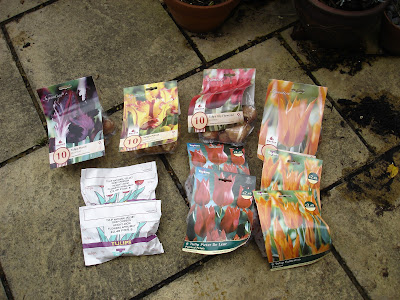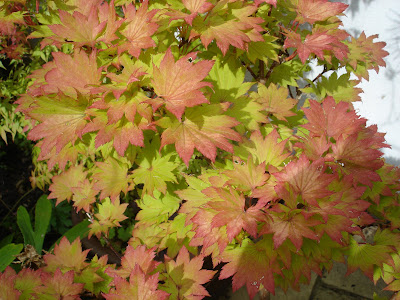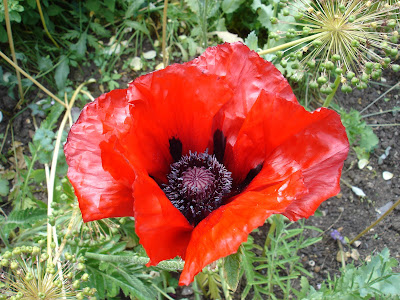This flower bed is at the front of the house, and is planted with lots of spring flowers, so it was sad to have such disruption at this time of year. Fortunately, the route of the pipe was in the wide space between the two roses, (which I pruned drastically to prevent them getting accidentally damaged) and nowhere near my fantastic Daphne Bholua "Jacqueline Postill". The only important plants in the way were two lovely hellebores and two primroses, which I planted last year. The only thing I could do was to dig them up with a huge root ball and put them in pots until the gasmen had finished. I thought they would finish in a few hours, but in fact they didn't finish until 7pm, when it was dark and too late to try to replant anything. The plants sat in their temporary pots for 5 days until I found time to sort them out today.

The gasmen had filled in the hole in the dark, and compacted the soil, which meant I had a circular depression in the bed, about three inches deep. Some of the soil was still around the roses and other plants, but I asked the gasmen to leave the tidying up to me so that I could do it carefully in daylight to minimise the damage. This is what the depression looked like:
After brushing the loose layer of soil from around the surrounding plants and replacing it in the depression, I tried to reduce some of the compaction of the soil, by going over it with the fork, making small deep holes to allow drainage. I then mixed in an amount of compost in the top layer to improve the soil, before replanting the hellebores and primroses. Fortunately, the large root balls remained intact and went a long way to levelling the depression. To replace a small geranium which had been dug out, I took a couple of Irishman's cuttings from a geranium in the back garden and placed them at the back of the border. I watered in the plants thoroughly and added more compost over the top. Hopefully this will encourage the worms to do their thing and improve the soil. The area still looks a muddy mess but in time I hope it will look less muddy as the plants fill out.
Fingers crossed that the plants survive their trauma. The good news is that I shouldn't have to dig them up again anytime soon. 














































